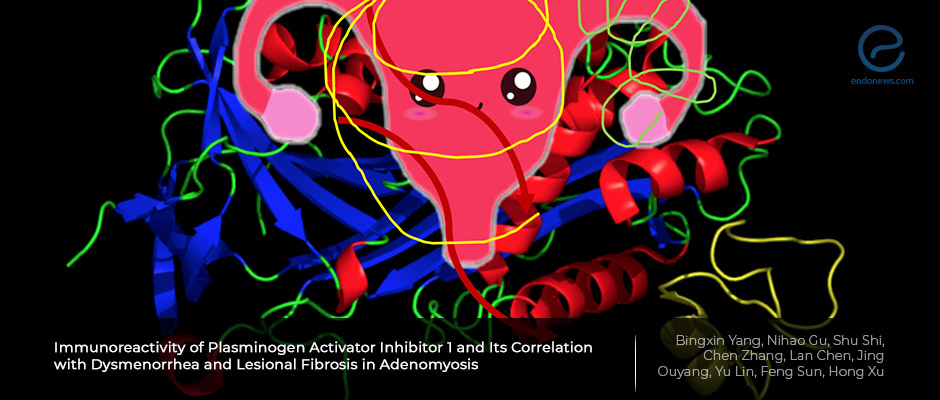The cause of PAIN in patients with adenomyosis
Mar 23, 2021
One step further on the mechanism of pain in patients with adenomyosis, PAI-1 activity.
Key Points
Highlights:
- The pelvic pain related to adenomyosis is found to be correlated with "Plasminogen activator inhibitor-1 (PAI-1)" activity in the tissues isolated from adenomyosis.
Importance:
- The study revealed the expression of PAI-1 is not related to the menstrual cycle and increases in the adenomyosis tissues of patients with pain.
What's done here:
- Fourty-five paraffin-embedded samples from adenomyosis and eutopic endometria of endometriosis patients, and 40 control endometria from patients who underwent laparoscopyfor reasons other then endometriosis.
- The pain (VAS scores) and amount of the menstrual bleeding of all participants were also noted.
- The immunochemistry analysis for PAI-1 antibody and evaluation of fibrosis performed and compared.
Key Results:
- PAI-1 was examined in the endometrium, myometrium, and vessels of the uterine tissue. Immunoreactivity was more intense in the glands compared to the stroma.
- Mean optical density for PAI-1 in adenomyotic lesions was higher than eutopic endometrium of patients and endometria of the controls.
- The degree of fibrosis was positively correlated with the levels of PAI-1. The PAI-1 immunostaining and fibrosis levels were correlated with dysmenorrhea score, but there was no such a correlation in eutopic endometria tissue examinations.
- No relation was found between fibrosis or PAI-1 levels and menstrual flow amount.
Limitations:
- The study was designed as a cross-sectional study and the effects of confounding factors on results cannot be omitted.
Lay Summary
Adenomyosis is known to be a painful disease with heavy menstrual cycles and negatively affects fertility. Even adenomyosis and endometriosis look alike, it is still crucial to call them as different variation of the same disease.
The mechanism underlying the pain in adenomyosis is still unknown. In the study conducted by Bingxin Yang et al, the correlation between pain, Plasminogen activator inhibitor-1 (PAI-1) and fibrosis levels in the adenomyosis lesions is evaluated.
Plasminogen activator inhibitor-1 is known to have a relation with endometriosis, especially in deep infiltrating endometriosis, its actions causing altered cell adhesion, migration, and invasion have been studied.
Even though PAI-1 has been announced as a fibrinolytic agent, the studies on cancers also revealed its presence in fibrotic tissues. In the present study, the authors found a significant correlation between immunohistohemically detected PAI-1 expression and fibrosis in the adenomyotic lesions. Furthermore, dysmenorrhea-related pain scores of women were also correlated with PAI-1. However, no correlation was found in the eutopic endometrium expression levels for both parameters.
The authors concluded that the possible mechanism of pain is related to fibrosis , andthe information about PAI-1 expression levels of adenomyosis might lead to studies searching for new targeted therapeutic agents for adenomyosis treatment.
Research Source: https://pubmed.ncbi.nlm.nih.gov/33683668/
adenomyosis pain PAI-1 fibrosis

